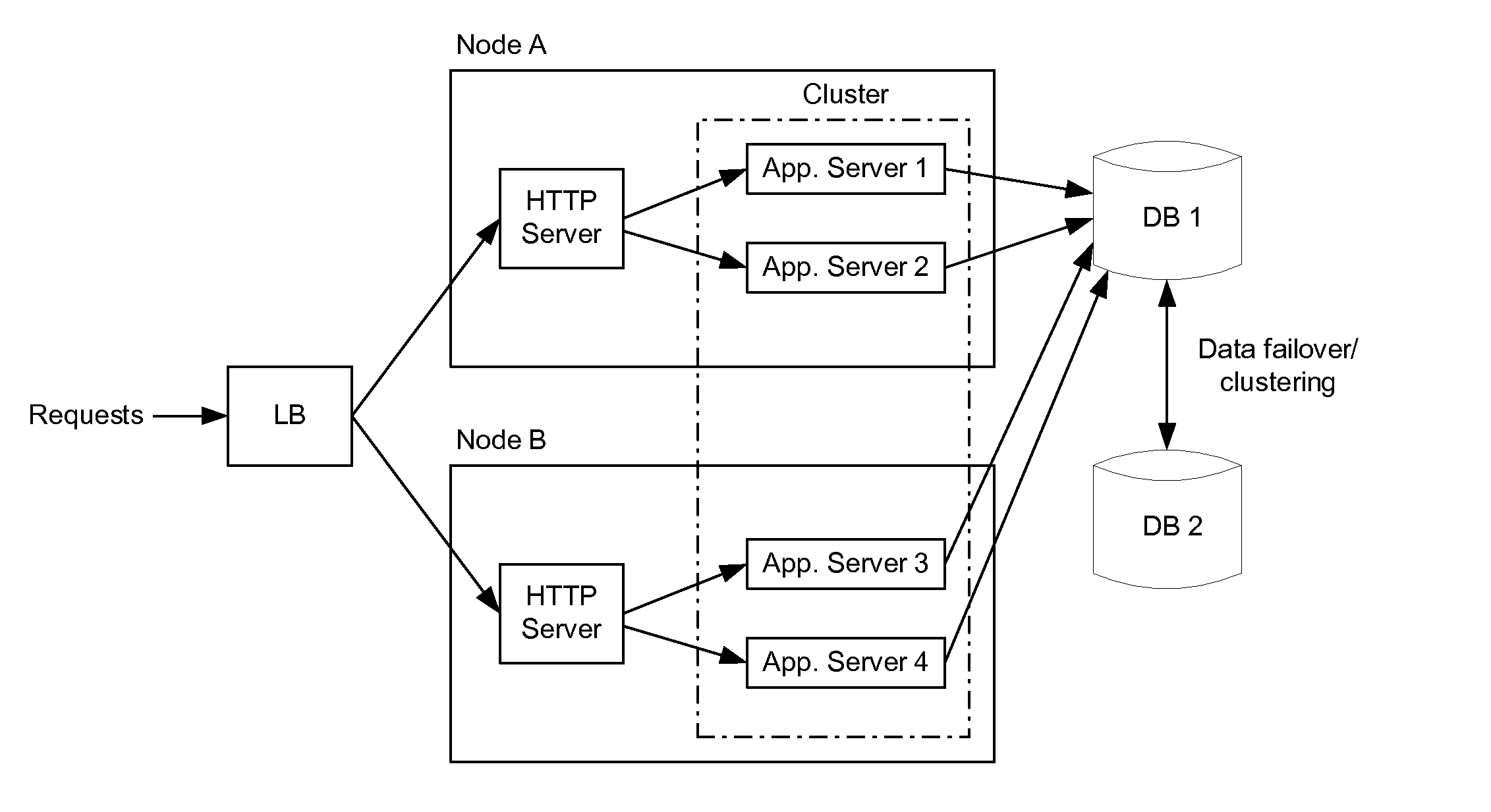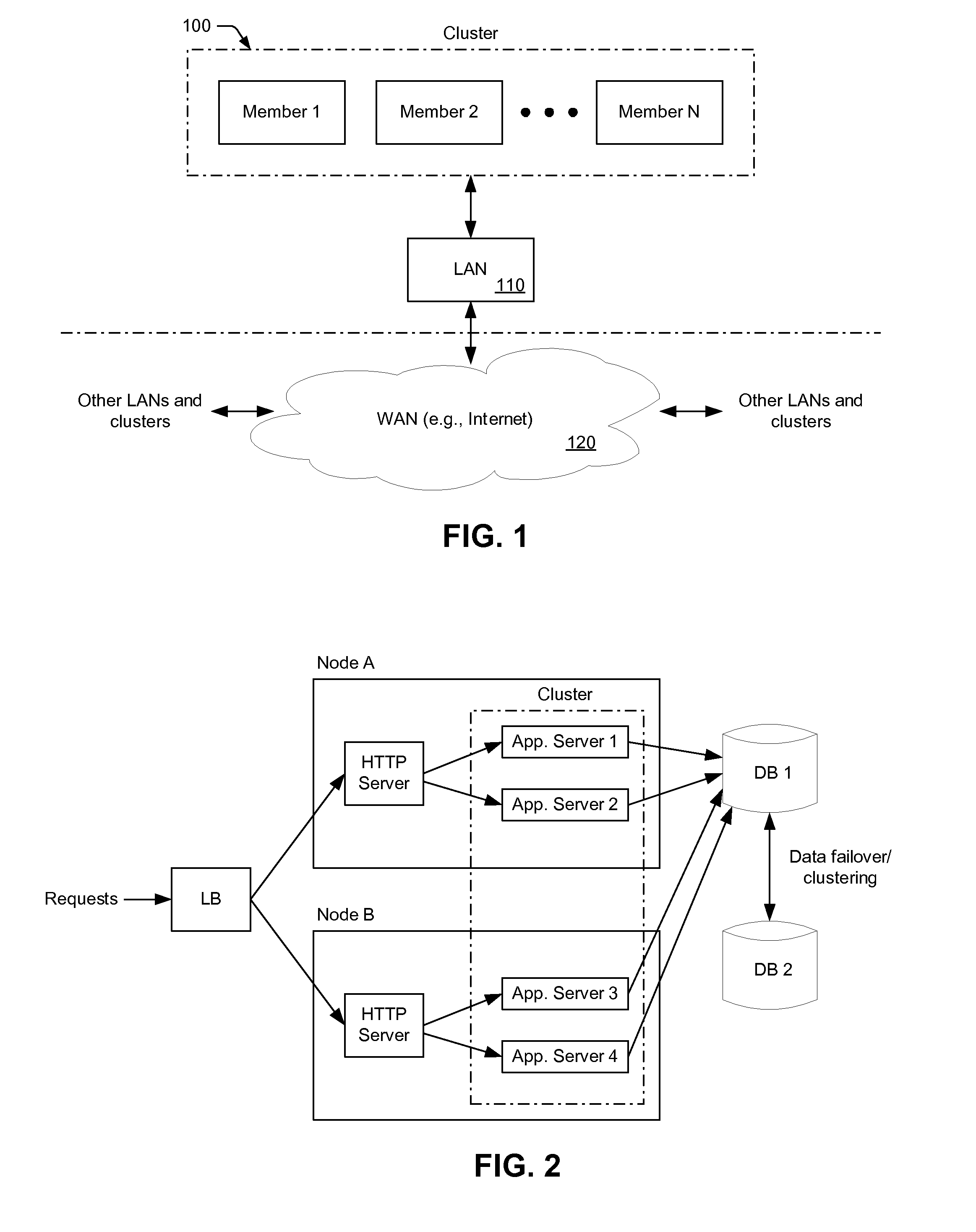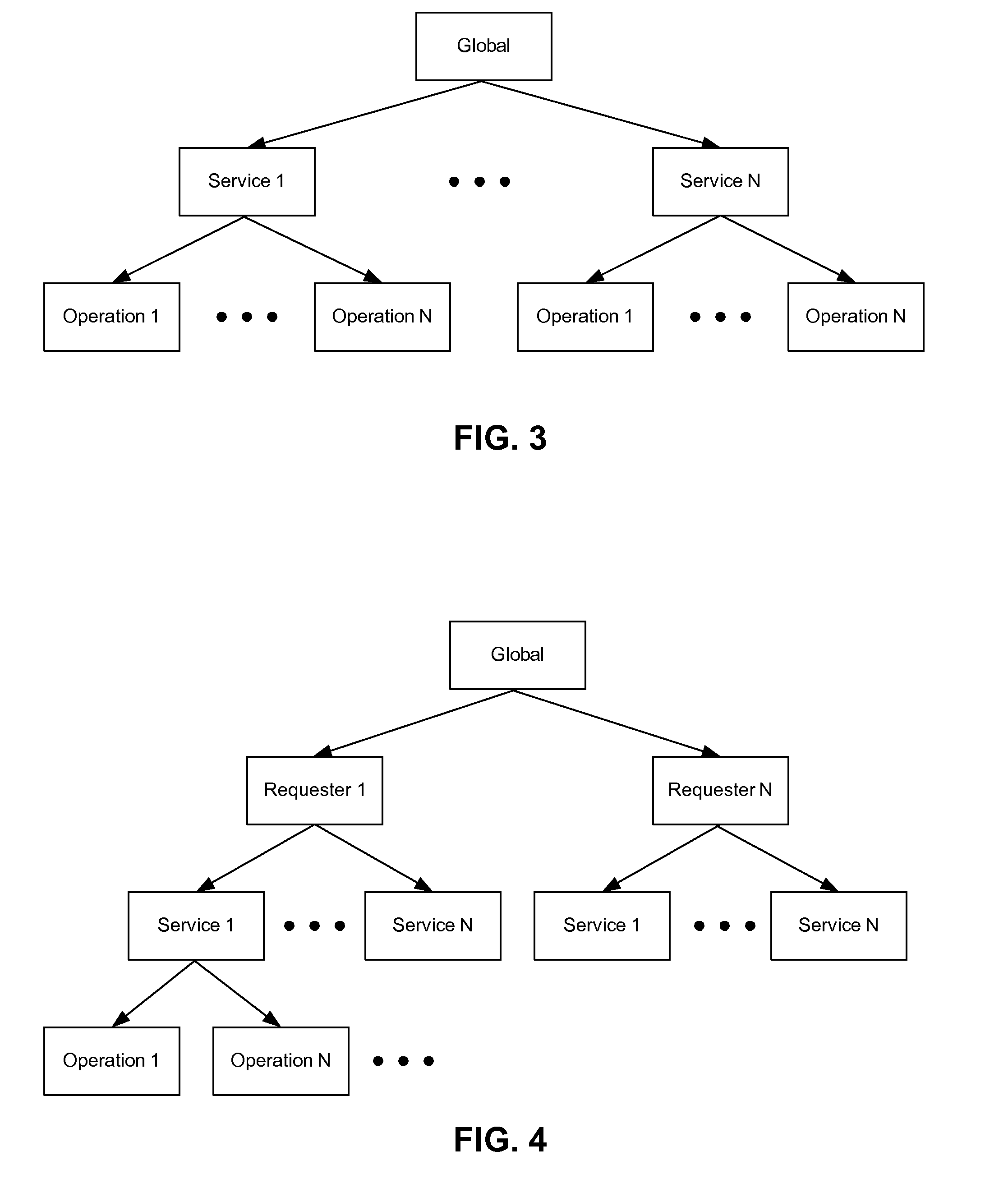Method for Distributed Hierarchical Admission Control across a Cluster
a cluster and hierarchical technology, applied in the field of computer networking, can solve problems such as packets considered non-conform, network congestion, poor performance,
- Summary
- Abstract
- Description
- Claims
- Application Information
AI Technical Summary
Benefits of technology
Problems solved by technology
Method used
Image
Examples
Embodiment Construction
[0044]In many cases, a network cluster is defined as two or more machines (“cluster members”), which are coupled together across a Local Area Network (LAN) or Wide Area Network (WAN). In general, a network cluster may be created to: i) provide load balancing by distributing the workload across cluster members, ii) improve performance by splitting a computational task among cluster members, or iii) improve the availability of services by providing redundant nodes running a common application(s). Clusters implemented to improve the availability of services are typically referred to as “high availability clusters.”
[0045]In one example, a high availability cluster may include a set of application servers that are managed together and participate in workload management (WLM). The application servers (i.e., cluster members) participating in a cluster can be implemented on the same network node, or on different nodes. A “cluster,” therefore, is more commonly described as a logical represen...
PUM
 Login to View More
Login to View More Abstract
Description
Claims
Application Information
 Login to View More
Login to View More - R&D
- Intellectual Property
- Life Sciences
- Materials
- Tech Scout
- Unparalleled Data Quality
- Higher Quality Content
- 60% Fewer Hallucinations
Browse by: Latest US Patents, China's latest patents, Technical Efficacy Thesaurus, Application Domain, Technology Topic, Popular Technical Reports.
© 2025 PatSnap. All rights reserved.Legal|Privacy policy|Modern Slavery Act Transparency Statement|Sitemap|About US| Contact US: help@patsnap.com



